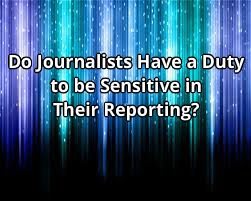
As stated in an earlier article, Milica Pesic of the Media Diversity Institute suggested that journalism should be: balanced, fair, accurate, sensitive [link] and inclusive. Do journalists really have a duty to be inclusive? If so, how inclusive does it have to be? Multiculturalism is a part of modern Britain, but it is difficult to strike a journalistic balance that pleases everyone. Different cultures, classes, ethnic groups, and religions, and they all have different ideas of what is newsworthy. There is a need for popular media to cater for as many different people as possible, but there is a limit to what they can achieve. Who decides how far it goes? Does it go far enough?
What’s Wrong with Non-Diverse Journalism?
As Milica mentioned, British society is not homogenous. It contains a vast array of different cultures. In many urbanised parts of the country, they are concentrated into unique melting pots of diversity. If journalism is meant to be a reflection of this, it needs to acknowledge the social landscape, and present news that suits this. Media that fails to cater for all pockets of society excludes minority individuals from public debates on what is happening. They are unable to engage in this discourse properly, as it may not be communicated to them in a suitable manner. It is the duty of the news organisations to make sure that they adapt to rectify this.
These people have different backgrounds, go through different experiences and often have different lifestyles to the ‘average’ person in the UK. By only consuming news which doesn’t include them, they may not be able to engage in the same way that others can.
Journalism that isn’t inclusive to a range of cultures can misrepresent these other groups, or exclude them from media altogether. Ethically, this is wrong. On a large scale, this can have massive implications, as Stuart Hall’s “Mugging, the State and Law & Order” showed. Part of this comes down to the individuals presenting the news. In 2013, 94% of British journalists were white, compared to 91% of the population. The source of the information doesn’t disclose how many of these take up more senior roles. If they are even less represented at these higher levels, it adds to the issues holding minority groups back in the media. Whether this is a conscious decision or not, this will reduce the likelihood of other voices being presented in popular media.
All of this comes down to the question of newsworthiness. An essential story to some people will be of limited, niche interest to others. Anything that favours the ‘norm’ will always be swayed in that direction and that is no different with journalism. It means that the concept of ‘newsworthiness’ is biased against diverse cultures in society, and these people will be marginalised further, until there is a significant shift. This is a problem across many industries in the UK, but is a particular problem when the media has such an influence over society.
What is the Best Solution?
The best solution is for journalism to embrace diversity in a balanced, natural and proportional way. Trying to reach a ‘quota’ of news stories that represent diversity can be considered both forced and condescending. Instead, news publishers need to employ journalists (and senior editorial staff) who reflect the society they are representing. They, in theory, should be able to bring out the diversity of the group they are serving. It goes all the way back to the purpose of journalism: to reflect what is happening in society. Despite efforts to encourage people of minority background to get into journalism, the overriding trend still lacks suitable diversity.
Diversity doesn’t just involve people with different skin colours, religions, mother tongues and so on, but also age. The news is changing to offer on-the-go news for younger generations, to suit the way that they consume news. It is only right that the same happens for the other facets of diversity. Everyone needs to have a voice and although there are specialist publications to cater for certain pockets of it, they should all be able to rely on popular media to represent them proportionally too.






